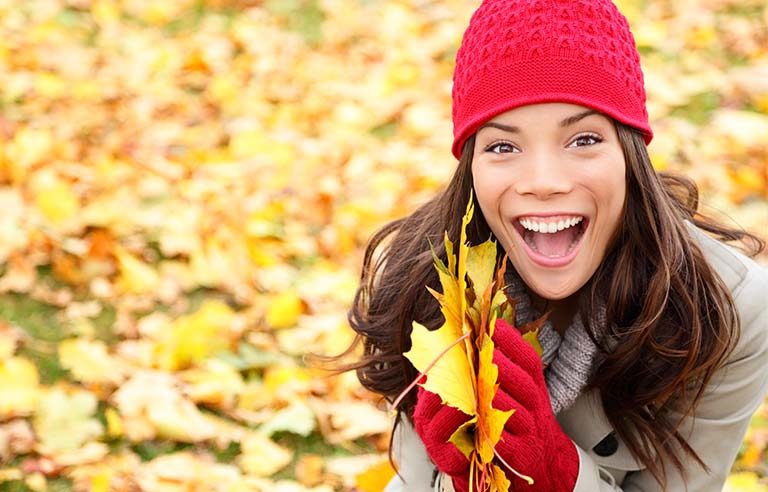It’s fall!

Watching out for wildlife
Autumn is mating season for deer, which means they’re more active and a greater hazard on roads. Check out the Washington Department of Fish and Wildlife’s tips to help avoid deer-vehicle collisions:
- Be particularly cautious when driving at dusk or dawn, when deer are more active.
- Pay attention to “deer crossing” signs. They’re placed in certain spots for a reason.
- If you see one deer crossing the road, know that others may follow, as they tend to travel in groups.
- If a deer is ahead of you in the roadway, don’t swerve. It could change direction – and move back in front of you – while you’re switching lanes.
- If you can’t avoid a collision, slow down as much as possible, maintain a firm grip on your steering wheel and keep your vehicle straight.
Enjoying the harvest
If you live in a metro area, chances are good you don’t see many tractors, combine harvesters or other farm-equipment vehicles on the road. But they’re a common sight in more rural areas, particularly during the fall harvest season, so it’s important to take care when driving around these slow-moving vehicles. The Oregon Farm Bureau has helpful tips:
- Slow down when you see farm equipment on the road.
- Farmers are aware that they’re holding up traffic and will do their best to move out of your way so you can pass. But give them time.
- If a piece of farm equipment that is wider than one lane is approaching you and you can’t pass it safely, stop and pull off the road until it passes you.
- Never assume that drivers of farm equipment know you’re behind them.
Halloween fun
The COVID-19 pandemic means Halloween may be a bit different again this year. But you can still have fun! First and foremost, follow the Centers for Disease Control and Prevention’s latest guidelines to help ensure your celebrations are safe. Then, talk with your neighbors about socially distanced options, such as decorating tables and placing them at the end of driveways so kids can grab candy themselves. And don’t overlook traditional Halloween safety practices, including inspecting all treats when kids get home. Here are more tips from the American Academy of Orthopaedic Surgeons:
- As an alternative to carving, consider painting pumpkins to eliminate the risk of cuts.
- Costumes should be light and bright so kids are clearly visible. Trim costumes with reflective, glow-in-the-dark tape.
- Make sure costumes are flame-resistant and fit properly. Costume masks shouldn’t obstruct a child’s vision – consider using makeup instead.
- Talk with kids about using sidewalks rather than cutting across yards or driveways, and about obeying traffic signals.
- Instruct kids to approach only well-lit homes. Both kids and parents should consider carrying flashlights.
- Carry a cellphone while trick-or-treating in case of emergency.
Cooler weather
It’s sweatshirt season! When outdoor temperatures turn colder but you’re not ready to turn on your home’s heating system just yet, heating pads and electric blankets are good alternatives – if you use them cautiously. The Electrical Safety Foundation International says heating pads and electric blankets are the cause of about 500 fires each year. Help avoid a fire by following the ESFI’s list of “don’ts”:
DON’T:
- Use a heating pad and an electric blanket at the same time.
- Use an electric blanket or pad that has a cracked, frayed or charred cord.
- Put anything on top of a heating pad or an electric blanket, including other blankets or pets – you don’t want the devices to overheat. The same goes for folding the blankets – don’t do it.
- Leave a heating pad or electric blanket turned on when you’re out of the room or sleeping.
Winterizing your home
It’s not as fun as football, of course, but winterizing your home in the fall will help you be safe and warm indoors by the time the first flurry flies. So, let’s get ready. Here’s what the Centers for Disease Control and Prevention recommends:
- Check – and, if needed, change – the batteries in your smoke and carbon monoxide detectors.
- Call a professional to inspect and clean your chimney or flue.
- Caulk and weather strip all doors and windows.
- Clean out your home’s gutters and repair any roof leaks.
- Have your home heating system inspected.
Post a comment to this article
Safety+Health welcomes comments that promote respectful dialogue. Please stay on topic. Comments that contain personal attacks, profanity or abusive language – or those aggressively promoting products or services – will be removed. We reserve the right to determine which comments violate our comment policy. (Anonymous comments are welcome; merely skip the “name” field in the comment box. An email address is required but will not be included with your comment.)
